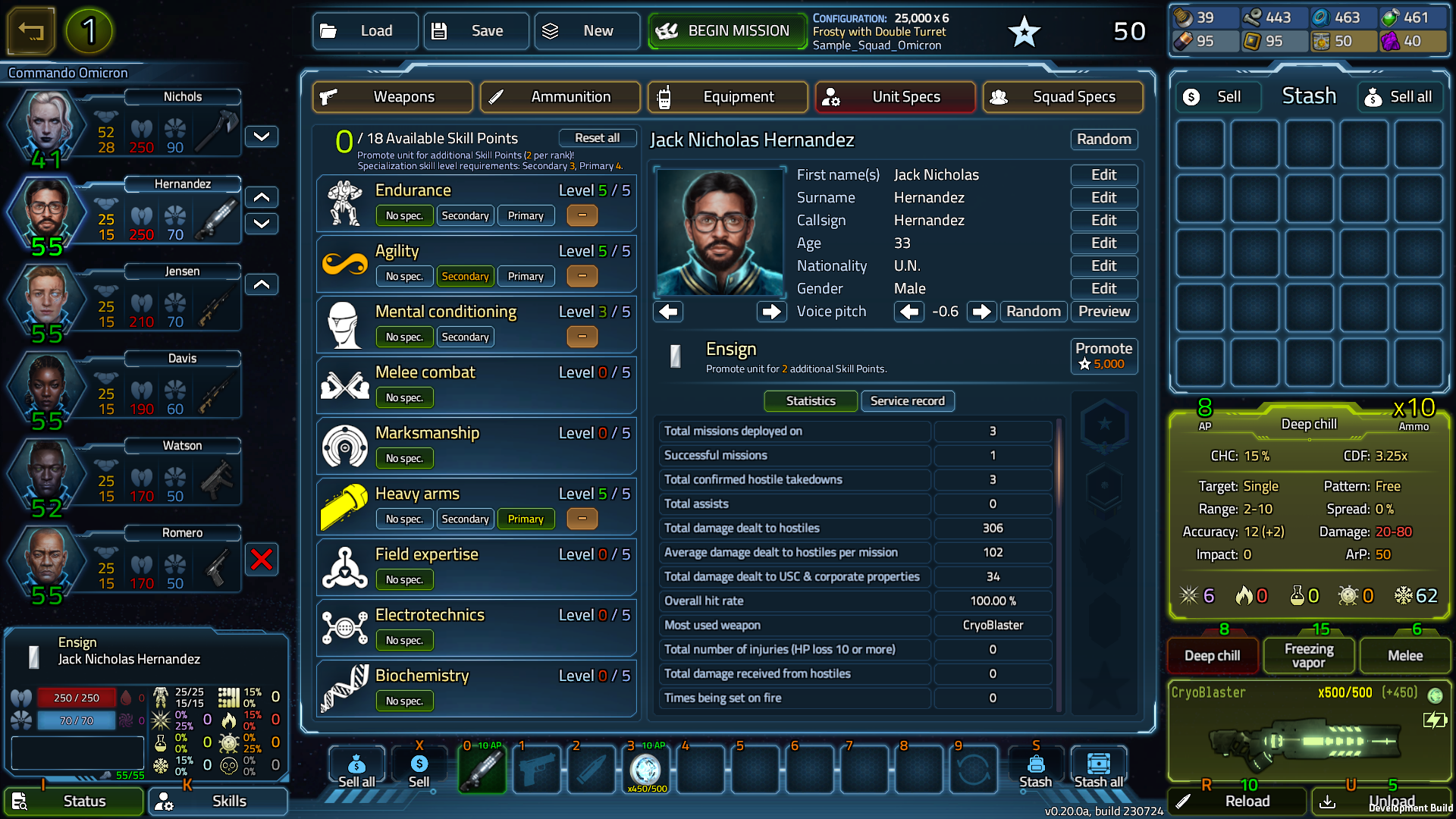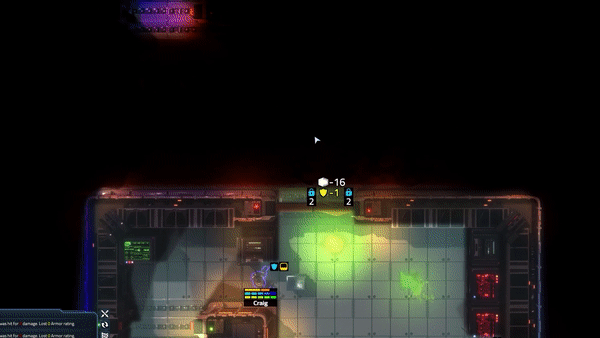The Shadow Envoys are back--they never left! Take command of your strike fleet and brave marines on an epic, turn-based tactical campaign to discover the real truth behind the demise of colony MC83-A, and protect Humankind from an ancient, unimaginable alien threat. USC is back with a Counterforce featuring in-depth, complex game mechanics, modern graphics, various game modes and endless high-stake missions.
STEAM: Store.steampowered.com
DISCORD: Discord.com
Marines,
USC: Counterforce is releasing on Steam today in Early Access. Your tactical skills will be your strongest advantage in the conflict you're about to enter. Face dreadful encounters and more in this immersive sci-fi environment!
The game is available in English and Simplified Chinese during Early Access.
Lead your Space Commandos in a thrilling revival of turn-based squad tactics. Featuring in-depth skill and combat systems, many game modes and inspired by games like UFO/XCOM, Space Hulk, and Aliens. Uncover the truth behind colony MC83-A's demise and join the USC in protecting humanity.
Engage on the battlefield with hours of gameplay already available. Enter a deep strategical experience that includes multiple game modes, customizable commando units and deadly alien hostiles to defeat. Master combat and find the perfect combination of skills in order to repel the alien threat.
You will have access to four special operations and an endless list of randomly generated missions available in Single Mission mode providing a strong replayability. Community feedback during Early Access will allow us to improve and update the current features and any upcoming additions to the full release version. The final version will include a full, open-ended campaign mode with a non-linear storyline.

Assemble the Ultimate Squad!
A well-advised marine needs to be prepared for every situation! Fully adapt your marines to the task ahead with a class-free system, assign and change their passive abilities and gears depending on your objectives and the threat you are about to face.
Make the best of the varied weapons and tools!
You can equip your marines with a large set of items. Use melee and ranged weapons with various perks and types of ammunition to eliminate the enemies. But don’t forget other useful equipment: hacking tools, mines, turrets, and more to help you survive and complete your mission.
Interact with your surroundings!
Explore and battle in entirely destructible and interactive settings. Reorganize the battleground to your advantage, lay traps, build barricades, avoid and exploit environmental hazards and more.
Play multiple game modes!
Fully customize your experience and challenges with a wide range of settings, from the environment to map size, difficulty level, objectives and more with the Single Mission mode. Choose how you want to play: solo or co-op? Team up in co-op multiplayer modes and play in classic hot seat or use Steam's “Remote Play Together” feature to bring a fellow soldier along online.

Your troops can exploit every resource and opportunity to overcome a dire situation. However, preparing your squad is equally important. To increase your chances of success, gather your marines, assign them roles and abilities, gear them up, and store supplies of medicine, armor, and ammo. Examine the terrain; each map has its own advantages and disadvantages. The future of humanity is at stake, so be alert, focus on your objectives and leave no one behind!
Each mission's outcome is greatly influenced by your tactics and capacity to hold your ground in battle.
You are on your own, soldiers. In space, no one can hear you scream.
USC: Counterforce is now out in Early Access on Steam.
The USC: Counterforce team

Dev Diary #2—Campaign Mechanics Preview
NewsIt's been a while! Let's talk about the Campaign mechanics in this sneak peek!

Wrath of Zeus major update!
NewsDiscover the new content of this major update with new features based on your feedback!

The Weapon Prototype system
NewsLearn more about the Weapon prototype system and get stronger weapons!

Hydroponic Hell major update!
NewsHappy New (hellish) year! Your marines are far from being out of their nightmare with the new challenges ahead!

USC: Counterforce Alpha 0.4.0 is now available!
DemoAlpha 0.4.0 Demo brings dedicated melee weapons and many various fixes!

USC: Counterforce Alpha 0.3.3 is available!
DemoAlpha 3 (v0.3.3) is the currently available build. This update brings many bug fixes and optimizations to the game.

USC: Counterforce Alpha 0.3.2 Demo is out now!
DemoThis update brings many bug fixes and optimizations to the game. We've been testing hard to make sure the gameplay is now more enjoyable and the engine...

USCCF: Alpha 0.3.0 Demo
DemoWe've been working hard to release a new alpha demo build by the end of the year, that -- while still very far from complete -- offers a greatly improved...

USC: Counterforce Alpha 0.2.2
DemoAlpha 2 (v0.2.2) is the currently available build. First and foremost it finally adds SOUNDS and MUSIC to the game and contains lots of BUG FIXES, as...



















Hey! I did a Commodore 64 project in school, for the Basic class. I completely understand when you question yourself about playing verses creating games.